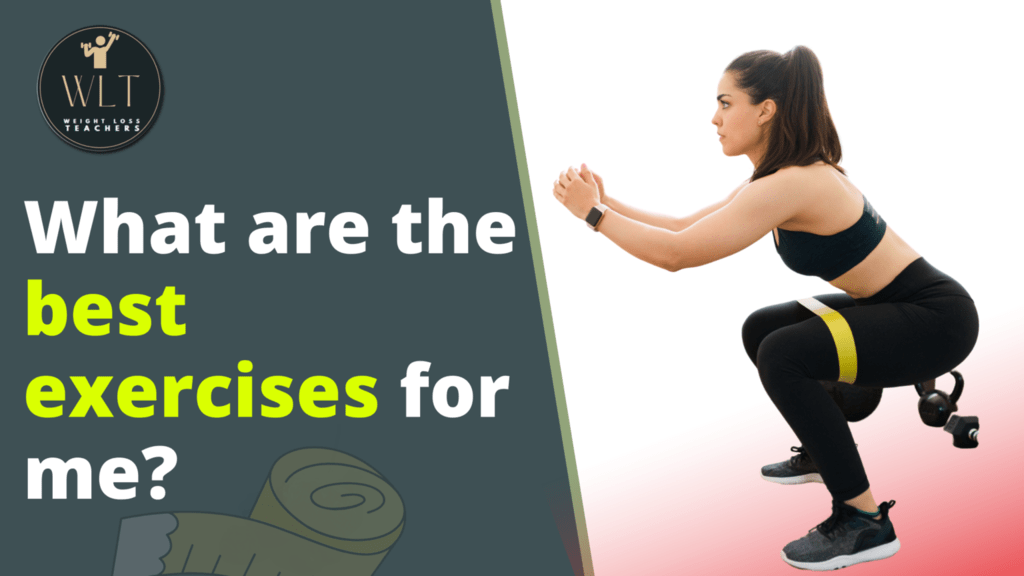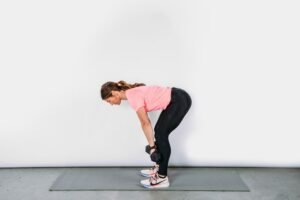
What are the Best Exercises for me?

Making a fitness regimen that we can keep to is the real problem for many of us, even once we realize how much regular weight loss exercise may enhance our physical and mental health. Whether your goal is to lose weight, improve your energy, mood, and sleep quality, or lessen the symptoms of depression, anxiety, or stress, it will be a lot simpler to get up and move every day when you are truly seeing the results you want.
Table of Contents
Introduction
The secret is to mix up your physical activity routine to achieve the results you want from weight loss tips, regardless of your present fitness level. Combining cardio (or aerobic) training, strength training, and flexibility and balance exercises will result in the most effective exercise regimens. In addition to optimizing the health benefits, this will maintain the variety and excitement of your workouts.
Creating the ideal weight loss techniques doesn’t have to be difficult or costly, but you can always download fitness apps, find workout regimens online, or sign up for personal training sessions at a gym. You may maximize your time and enjoy the full range of health and weight loss benefits of consistent exercise by following these easy rules.
How much exercise do I need?
When it comes to exercise, the most important thing to keep in mind is that any activity is better than none at all. You can reap the health benefits of merely moving more throughout the day and sitting less throughout it. If your fitness level permits you to work out harder, then 75 minutes or more of vigorous-intensity exercise per week will yield the same benefits. For example, you could sprint for fifteen minutes as opposed to walking briskly for thirty minutes.
If your fitness level permits you to work out harder, then 75 minutes or more of vigorous-intensity weight loss exercise per week will yield the same benefits. For example, you could sprint for fifteen minutes as opposed to walking briskly for thirty minutes. Engaging in moderate-intensity exercise for at least 300 minutes (or 150 minutes of vigorous-intensity exercise) every week can yield extra health benefits. For those trying to lose weight, this can be very helpful.
Jump rope

Skipping ropes are incredibly effective at increasing heart rate, fostering cardiovascular endurance, and developing cat-like coordination and quick, agile feet, which is why you see boxers and mixed martial artists using them to throw shapes during training. Any extended rope exercise is excellent for burning fat and building upper body strength, regardless of your degree of skipping ability. Initially, aim to skip for approximately 45 seconds, gradually increasing the duration as the weeks go by. Alternatively, try this 20-minute jump rope exercise.
- Scoop up both ends of a rope, flick your wrist to make the rope go in front of your body, then jump over to finish the move.
- Try increasing the speed at which you skip, try both single and double foot jumps, switch feet frequently, and even try some explosive double-unders, in which the rope passes beneath you twice before your feet touch the ground.
A jump rope might be the perfect inexpensive workout tips for you if you want to carry it with you on vacations. A great technique to burn calories quickly is to jump rope. Jumping rope actually burns more calories than using a treadmill for the same length of time. Along with working your core, you’ll also work your upper and lower body muscles. You can also get better at coordination by jumping rope.
Kettlebell Swings

This versatile exercise will not only help you build stronger huge muscle groups like your stomach, shoulders, quadriceps, and glutes, but it will also raise your heart rate and encourage your body to burn fat for energy. Try to complete as many swings as you can in a duration of 30 to 60 seconds. Repeat this for three to four sets to burn as much fat as possible.
- Set a kettlebell at around hip-width apart and place it between your feet. Grip the handle with both hands while bending at the hips as though you were squatting.
- Maintain an upright posture by keeping your core tight, your shoulders back, and your back straight while you face your butt. Rock back a little bit now to build up enough momentum to raise and swing the kettlebell in front of you while keeping your arms straight and extended. To help with this movement and push through your heels, brace your core, squeeze your glutes, and propel your hips forward.
- Remember to bend at the hips before repeating the exercise. Now, let momentum propel the kettlebell back through your legs.
Note: There might be affiliate links mentioned here. We may receive a commission if you purchase a product through an affiliate link. There is no additional charge for you. Please do your own research before making any online purchases.
Dumbbell deadlift

The lower body provides support for the upper body’s powerful muscles, such as the quadriceps and hips, during this compound exercise. This mix of powerful muscle groups tones and strengthens the upper body and raises the heart rate.
- Keep your feet slightly wider than shoulder-width apart and place a dumbbell in front of each foot as you stand tall.
- Assume a chair-like position with your knees bent, spine straight, and chest up by using your glute muscles and core to pivot forward and move your hips back.
- Grasp the dumbbells with your arms shoulder-width apart and your hands facing your shins.
- Start lifting the weights in front of your shins and stand back up with your knees, hips, and chest straight.
- To return the weights to the starting position, reverse the motion. That is one instance of repetition. 5–12 repetitions is the goal.
Burpees

Gaining proficiency in the burpee is a great method to include this compound exercise in your training, despite the fact that it is quite intimidating. It works practically all of your muscle groups and raises your heart rate, which increases your metabolism. (the amount of energy you burn throughout the day).
Lower yourself as though you were going to do a press-up from a standing posture. With your arms, shoulders, and chest braced to support your weight, explode rearward with your legs so that your thighs are parallel to the floor.
Instead of pausing here, quickly launch yourself into the air while maintaining your arms by your sides. Draw your feet back under your chest.
As many times as you can in thirty seconds, repeat this right away, without stopping. With each passing week, try to increase the reps and length of the exercise.
Slam balls

- With both hands gripping the ball above your head, stand with your feet hip-width apart and your knees and elbows slightly bent.
- Squeeze your glutes and engage your core muscles to propel the ball forward and bash it into the ground.
- When a medicine ball bounces back up, you can catch it and bring it back above your head. Then, you can drive through your heels and use your tiptoes to slam the ball back down.
- Try to complete as many slams in 30 to 45 seconds.
Step Ups

The glutes, quads, and calves must work hard during these single-leg workouts in order to raise your body onto the platform. To further help you stay stable when you step, the little stabilizing muscles contract. To up the ante on the workout, try doing it with a dumbbell or kettlebell in each hand.
- Locate a stable surface, such as a box, bench, or other substantial object that is between knee and hip height.
- When both of your feet are together on the surface and you are standing erect, place your right foot onto the platform and push through your heel. Step backward with the left leg, then repeat with the other leg, switching legs all the way around.
- As you complete as many repetitions as you can in 45 seconds, keep switching up your leg movements.
Walking

Including 30 minutes of vigorous walking in your daily regimen could increase your daily calorie burn by approximately 150. Walking for longer and at a quicker pace will burn more calories. If you’re not used to regular exercise, walking is a terrific alternative. Work your way up to longer, more intensive treks by starting with shorter ones.
Not only can eating habits be changed, but exercise routines must be increased in order to lose weight. Achieving your goals will be greatly aided by regular exercise. Aim for at least 300 minutes of moderately vigorous exercise every week if you want to reduce weight. These exercises will support you in that endeavor. All you need to do is ask your doctor which ones would be the best for you first.
Swimming

Having sore knees or a sore back might make it difficult to stay motivated to work out. Swimming is the perfect workout if you’re in that boat. You’ll work your upper and lower bodies, your joints won’t strain, and your cardio will benefit greatly. The water’s resistance will also work to your advantage. Your risk of heart disease, stroke, type 2 diabetes, and certain malignancies will decrease if you swim for 30 minutes several times a week. Additionally, it will lower your blood pressure and harmful cholesterol.
High-Intensity Interval Training (HIIT)

Exercise that alternates between high-intensity and low-intensity intervals is known as high-intensity interval training (HIIT). It’s incredibly beneficial for weight loss, but not something you should do every day. HIIT burns more calories than steady-state cardio. Up to 24 hours following the conclusion of your workout, the vigorous exercise keeps your body active and burning fat.
To increase muscle and strength, this kind of workout involves resistance. By adding muscle, it not only aids in weight loss but also in maintaining weight loss. Your body will burn more fat as a result of that. Aim for three to five strength training sessions per week, lasting around an hour each. Remember to take a day off in between every two days that you work on it.
Disclaimer: The information provided in this article is for educational purposes only and should not be considered as a substitute for medical advice. Consult a healthcare professional before implementing any home remedies or making significant changes to your lifestyle.






